May 28th 2023, Sunset Cove, Oregon.
Oregon is the America of my youthful memory. It was fashioned in my mind in dentist and doctor’s waiting rooms where lying about as distractions to make the time pass were copies of National Geographic magazine. And in those pages were the photographs — of the Rocky Mountains, of snow and pine tree-covered mountains, of blue lakes and rushing white water rivers where bears plucked out salmon — many of the photos taken in national or state parks, one of the greatest creations of United States government. And coming here on this journey, it is a source of great joy to discover that this America really does exist. I haven’t seen bears yet but I’ve eaten Pacific and fresh water salmon and, coming to the cafe just now at the edge of a state park where I am writing this, two young deer were ambling along the street, along the sidewalk and through a gravel topped parking lot, as though they owned the place.
I thought before I came here that this America might exist in Oregon and it does, plenty times over. After California’s redwoods, I crossed the state line into Oregon, moving first north along the coast and spending the night in a campground at Indian Creek. I slept by a stream with the tent flap open so I could see the dying embers of my fire. Throughout the night, a family of wild turkeys in the field on the other side of the stream created a lovely racket with bursts of gobble-gobbling at each other. Next day, I headed east, into the Cascade mountain range, along Route 138 through the Umpqua river valley and gradually, ever more into forested wilderness — wonderful, majestic wilderness that takes hold of the landscape and soon, there are fewer and fewer settlements.
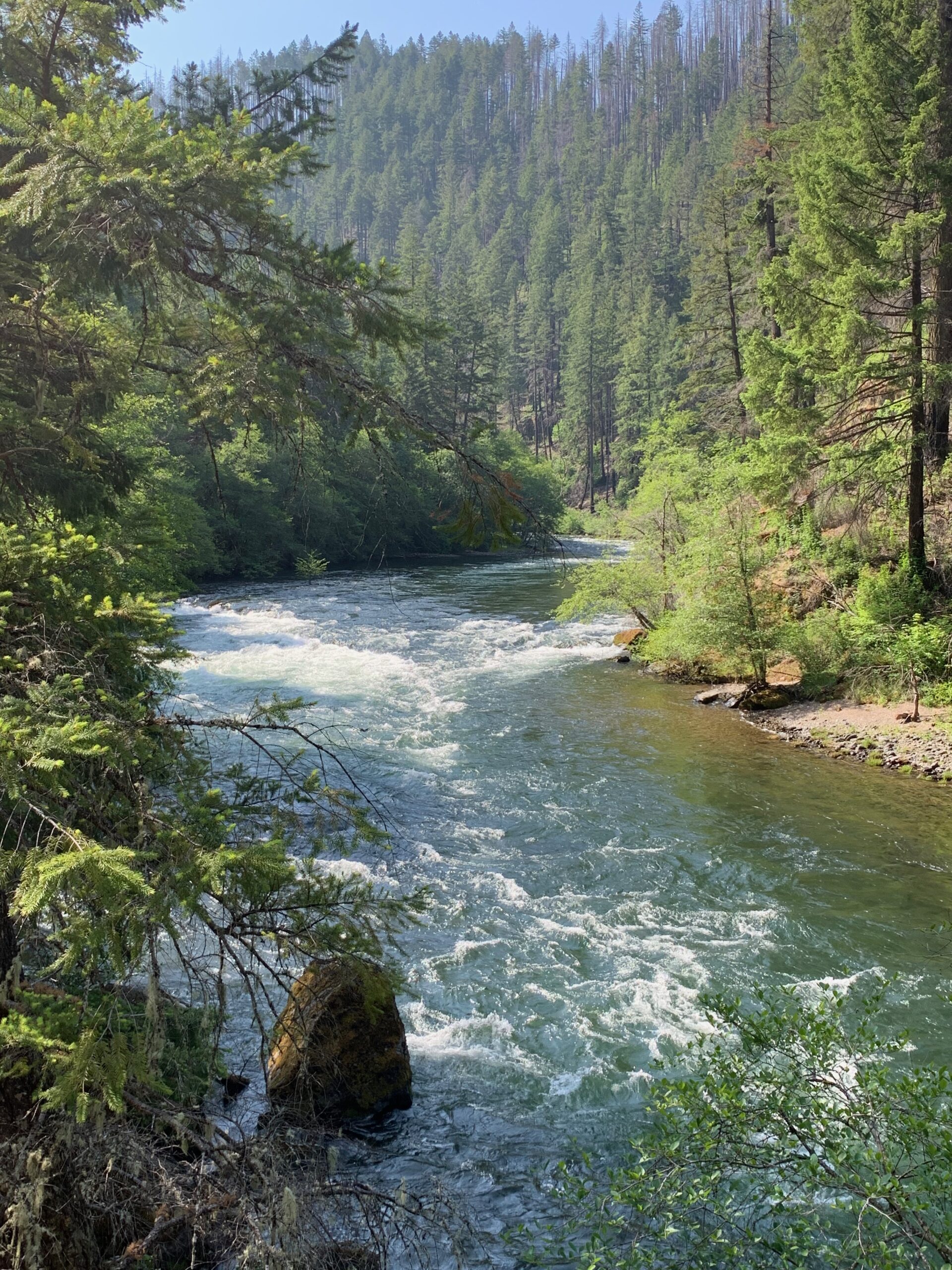
The road hugs the river and at almost every turn, a fresh vista of wild woods and rushing waters opens up. I’m deep into the Umpqua National Forest and heading notionally for Crater Lake, one of Oregon’s major natural attractions and as I progress, there is evidence everywhere of the damage caused by forest fires. Swathes of forested hillside are inhabited now by burnt stalks of trees but undergrowth has begun to return.
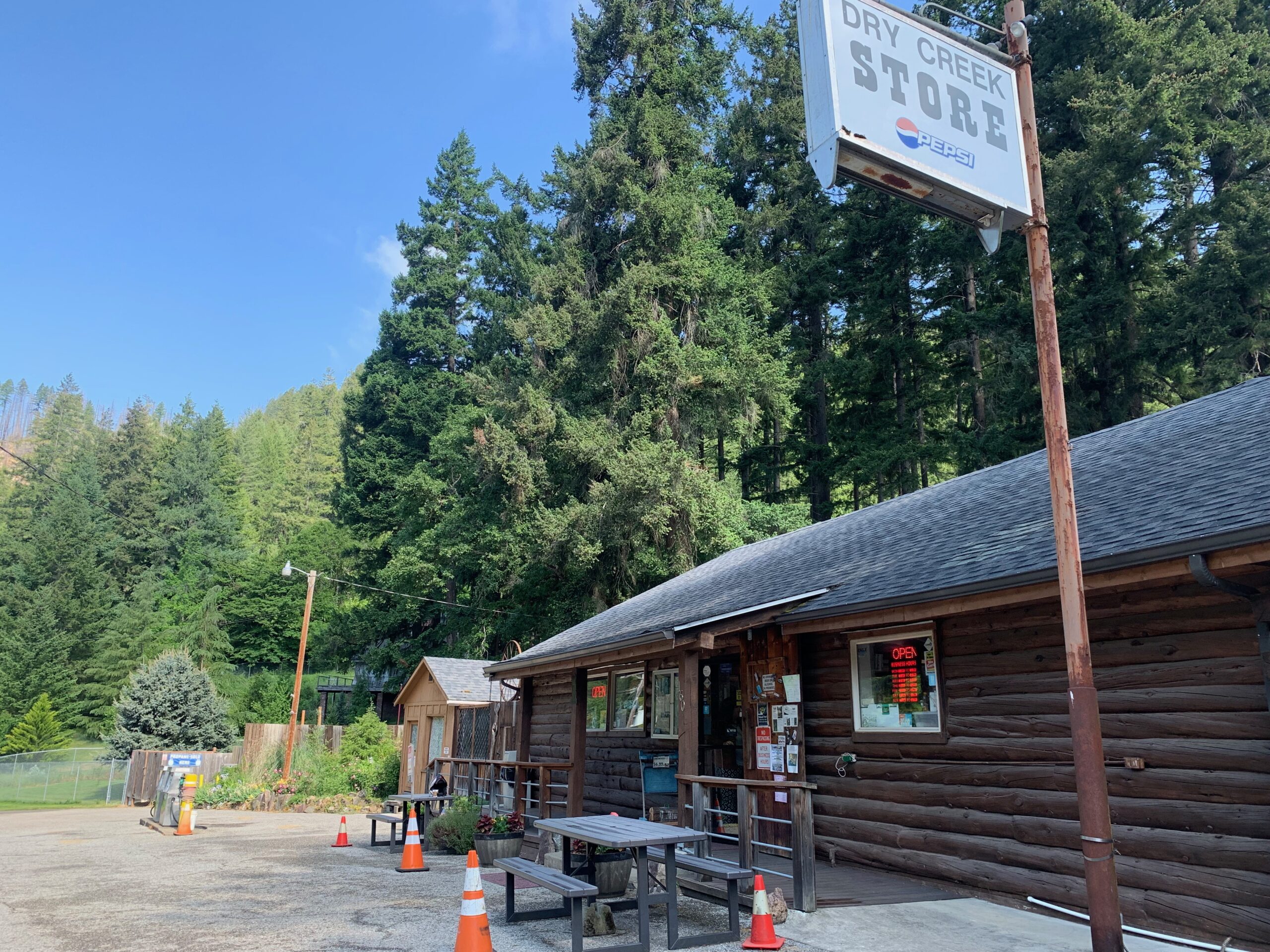
Dry Creek Stores appears on a bend, the first shop, and gas station, in many miles. “Lovely valley,” I say to the woman behind the counter. She’s Nancy Merchant, co-owner of the store with her husband. “Yes it is,” she says, adding: “Now if we can only have a boater who doesn’t set the forest on fire . . .” Is that what happened, I say.
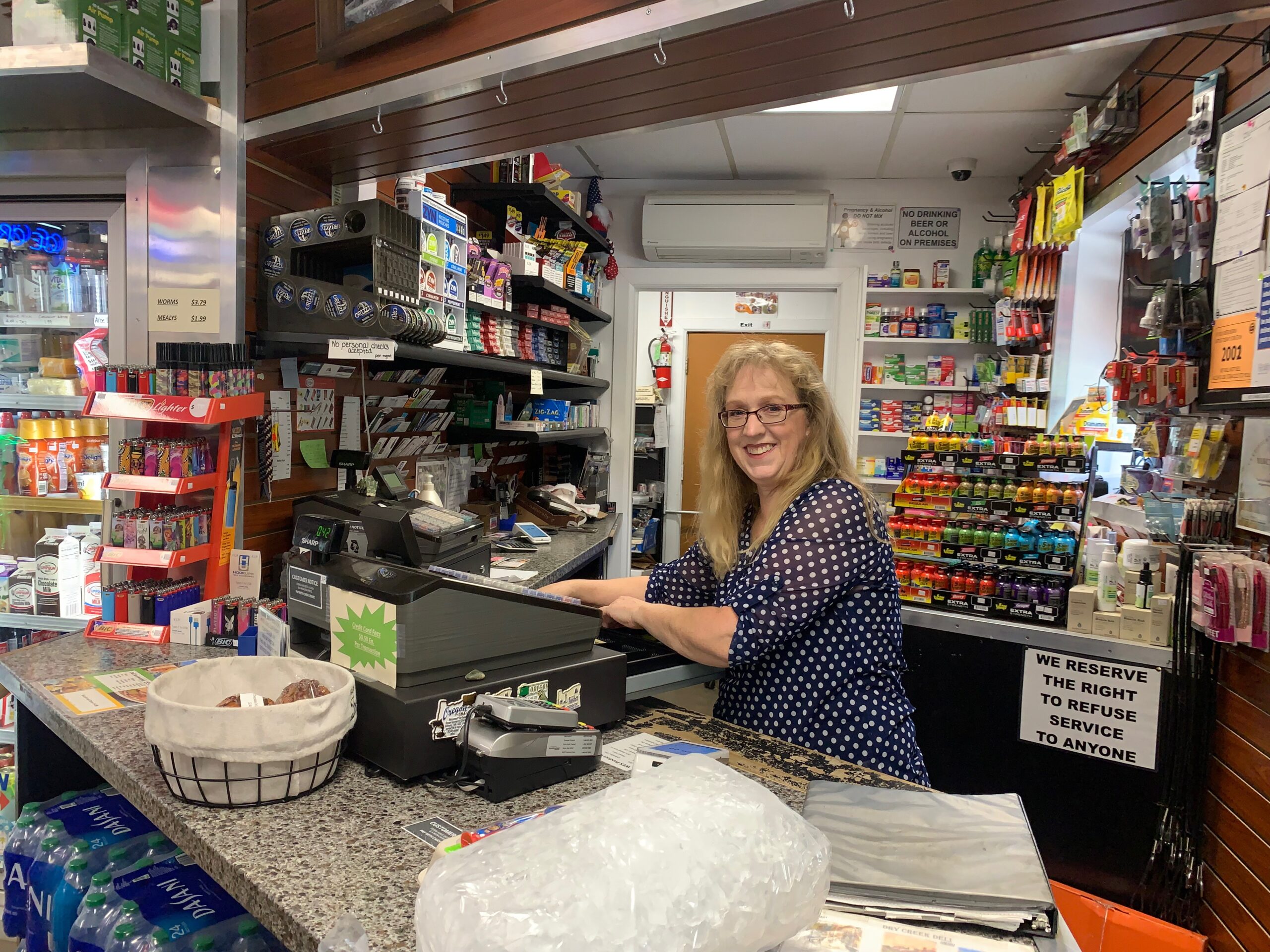
She goes on to explain that in 2021 a boater — a lake fisherman with a boat on a trailer, of which there are many — was towing on the road but his wheel bearings were shot. “And he just kept going, sparks flyin’ everywhere and that’s what started it,” she said. “Had another in 2017 too. Don’t need another.”
Later, when I come back to her about the fires, she explains that, actually, the boater pulled off the road to check his bearings problem and the heat from the wheel caused the grass to go on fire and eventually set the forest ablaze. “That was the end of our summer business,” she said, “shut the road down for three months”.
I can’t confirm the precise details of Nancy’s memory but Oregon’s wildfires in 2021, include in her area of the state, saw the destruction of some 518,000 acres of forest. The causes of most of them are either unknown or lightening. Nancy’s fire is known as the Jack Creek fire and online photos show a terrifying inferno that engulfed 4,600 acres. “You could see it from our driveway,” said Nancy. “It was pretty scary. We had probably 100 firefighters here protecting our store so we felt it was OK to stay.” The little store is a felt-roofed log cabin and would have gone up in seconds, I’d say, if the blaze had got close enough. It’s a miracle it survived.
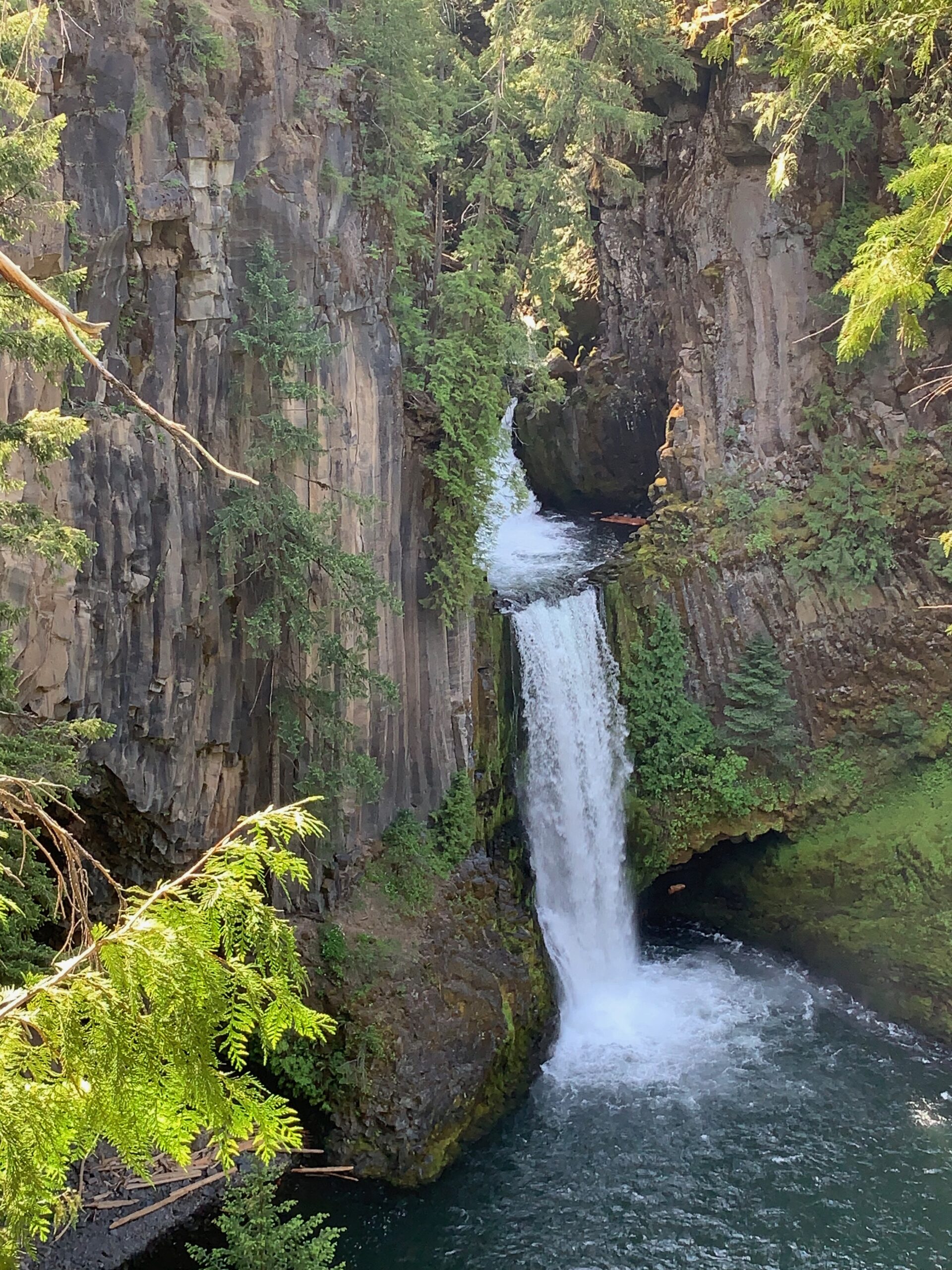
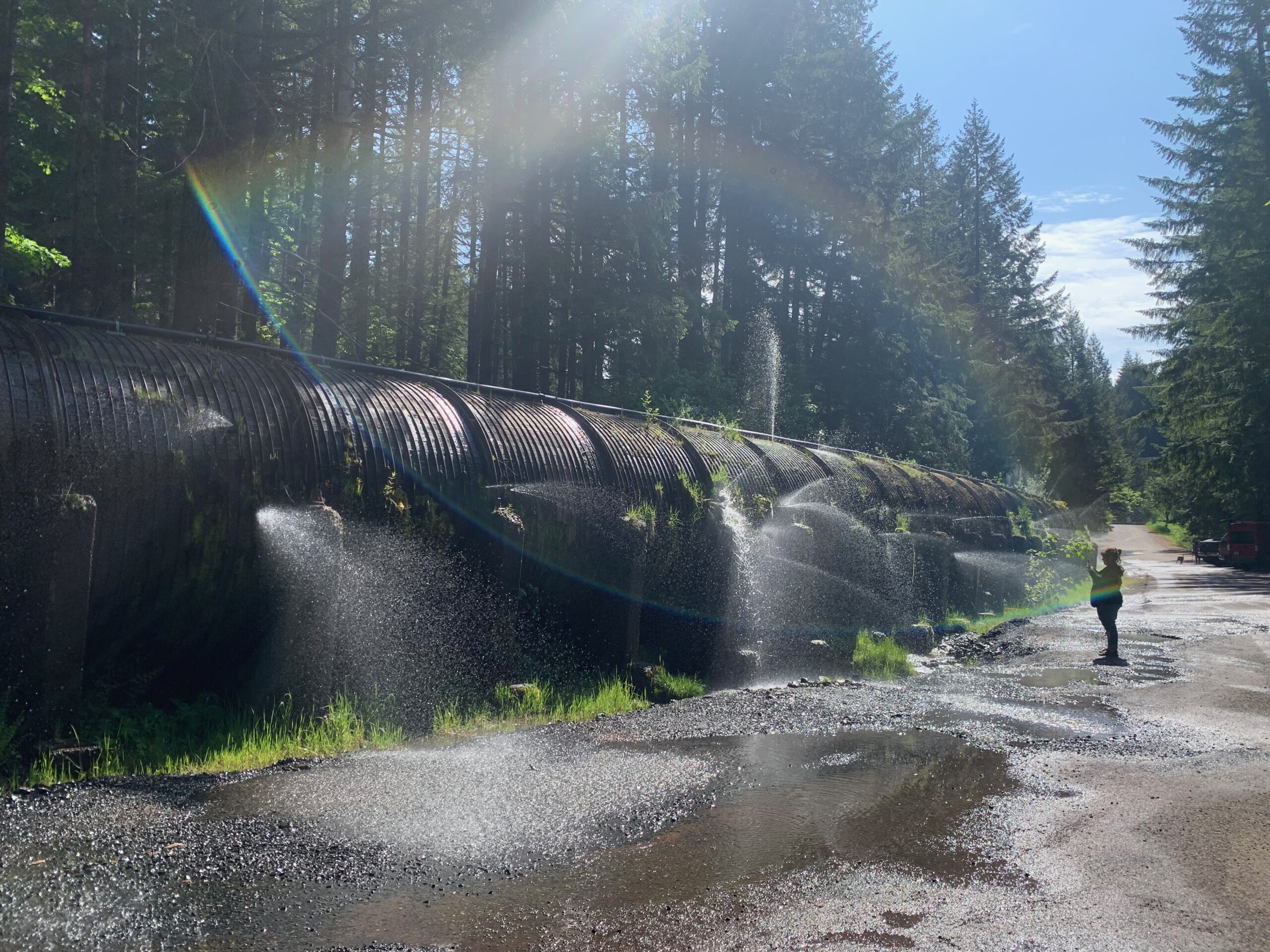
My first night in the mountains is at Eagle Rock Campground where the parks people trust you to pick your spot and place the fee — $12 — into a box at the entrance. Riding on next morning, I come to Toketee Falls where the North Umpqua River tumbles over a basalt escarpment and has drilled through it, creating a number of pools before tumbling perhaps 100 feet and progressing once more as a normal river through the valley. Toketee means “pretty” in the Chinook Indian language and the falls are indeed pretty. There’s a small hydroelectric operation nearby and an extraordinary 12-foot in diameter wooden pipeline that takes water to turbines powering three generators and producing power enough for 22,500 homes. The wooden pipeline is 1,500 meters long and was built in 1948/49 from staves of redwood held together by circular metal braces. It leaks like a sieve, spewing showers of water that glisten in the sunshine but otherwise, it looks good for timber soaking in water for over 70 years.
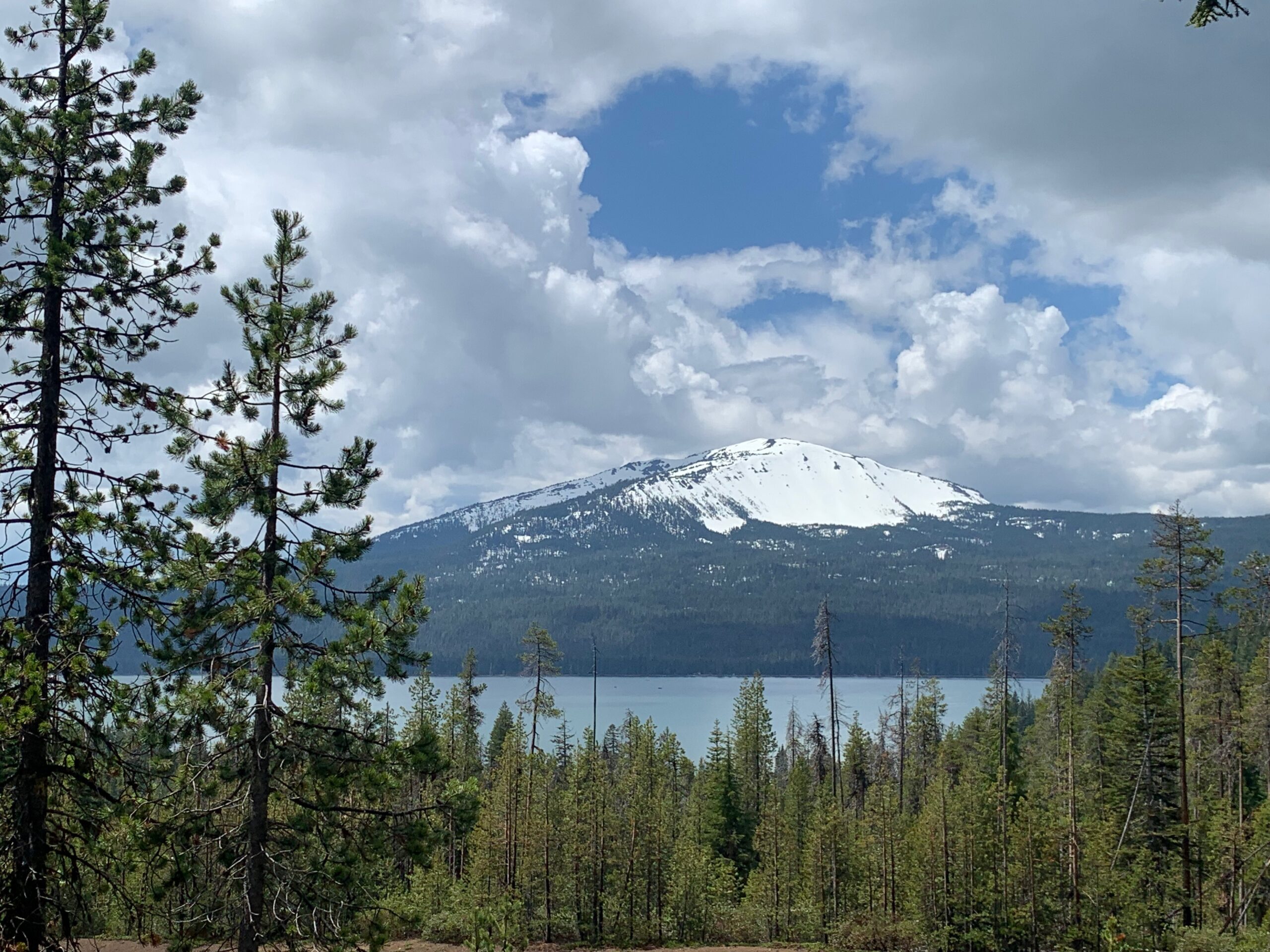
Heading towards Crater Lake, the air gets noticeably colder and soon, there’s snow on the mountains. Diamond Lake, a sister to Crater Lake, is sandwiched between two volcanic peaks, Mount Bailey (8,375ft) and Mount Thielsen (9,184ft). I’m west of the Rocky Mountains proper but, snow covered and rising above a pine tree forest, under a blue sky and with blue lake water below, Mt Bailey appears to me to be pure picture postcard Rockies. Unfortunately but as I had been warned by Nancy, the road to Crater Lake is snow covered and closed.
Route 138 brings me to Route 97 and I swing north on it and then west again on Route 58 where there are suggestions of camping sites around several lakes. Eventually, after several disappointments, I get lucky at Sunset Cove Campground where all the sites are taken but one has no booking ticket on display and a passing RV resident tells me: “That’s a first come, first served — and the other guy just left so it’s all yours.” I’m there only a few minutes to see a stream of disappointed hopefuls file past. The lake on which the cove sits is named Odell and it is everything I could have hoped for — glassy calm and silvery, with forests right down to the water’s edge and fishermen out on the water. Most catch several fish and gut and wash them by the car park. they say they’ll freeze them or smoke them at home.
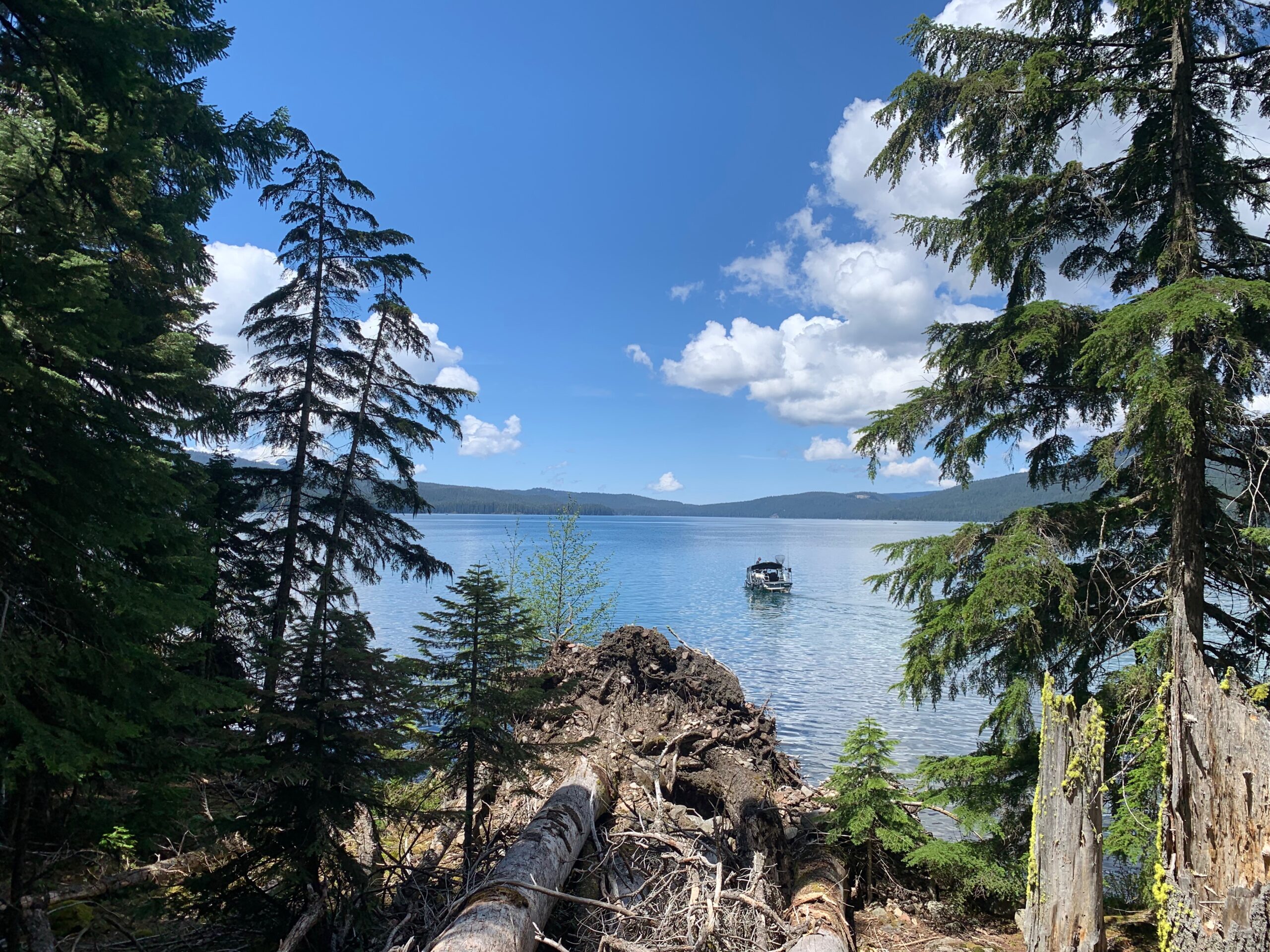
There are squirrels and chipmunks running about the place, and lot of birds — crows and ravens, turkey vultures and Steller’s Jay. The ravens and crows are thieves (some managed to steal a whole tray of uncooked chicken marinaded in satay when my back was turned) but the Jay is a lovely, cheeky visitor, a little nervy but beautiful.
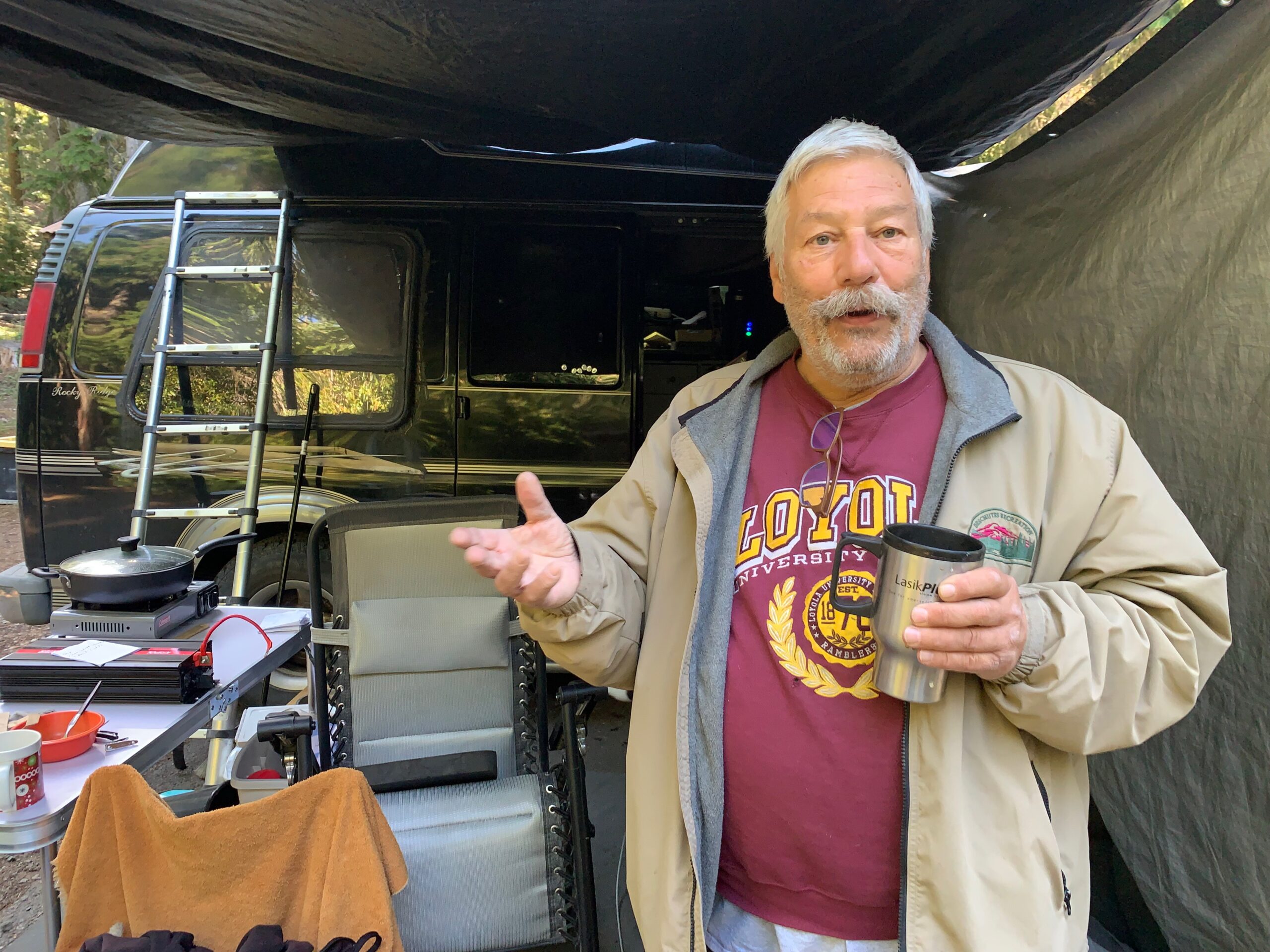
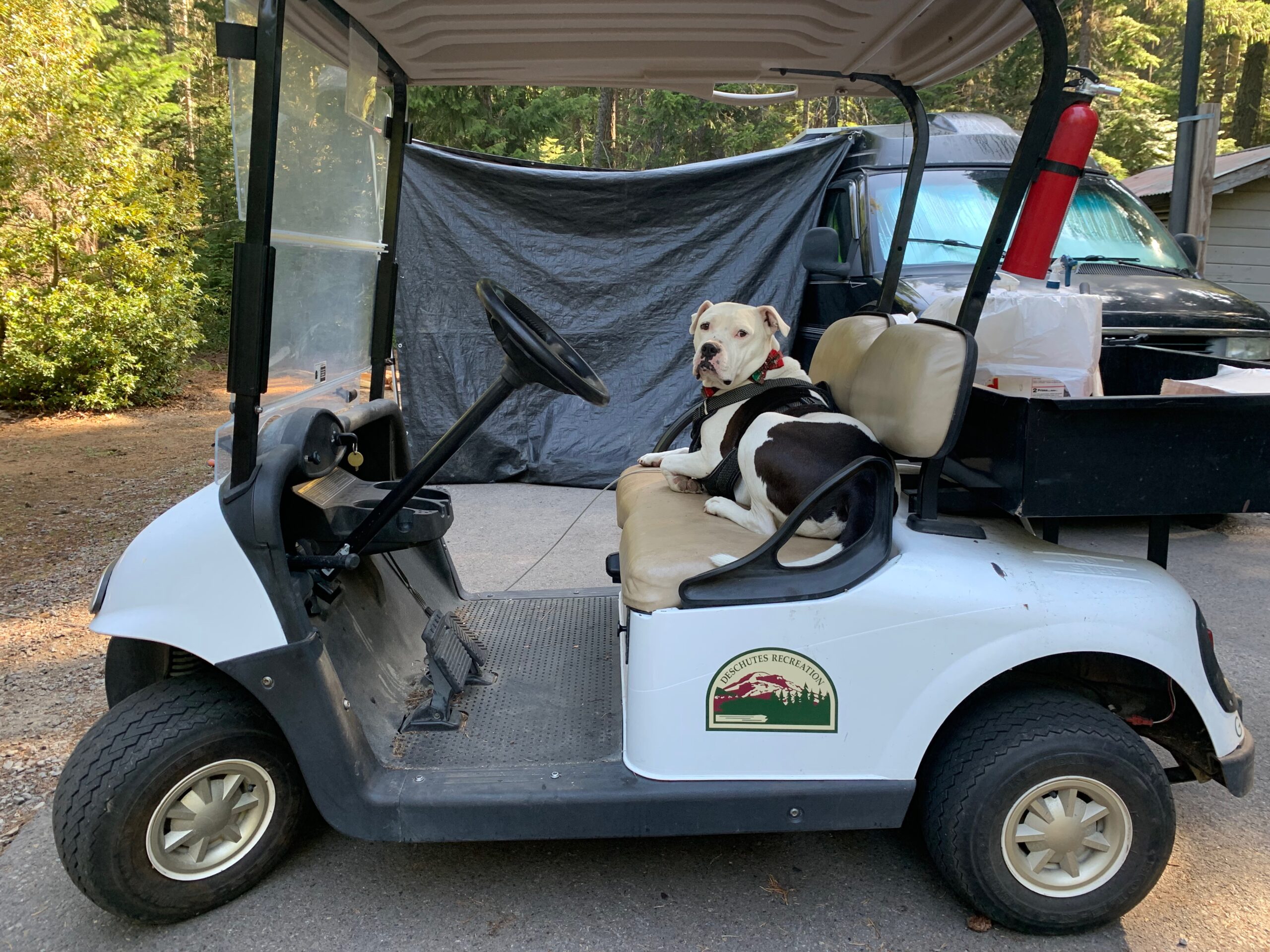
Next door to me is the camp host, Vince from Cleveland, who is working and travelling with his four-legged best friend, Rickey. The place is so nice, and Vince and Rickey such good company, that I spend two nights at Sunset Cove thinking how lucky I am to be here and wishing Moira my wife was sharing this too.
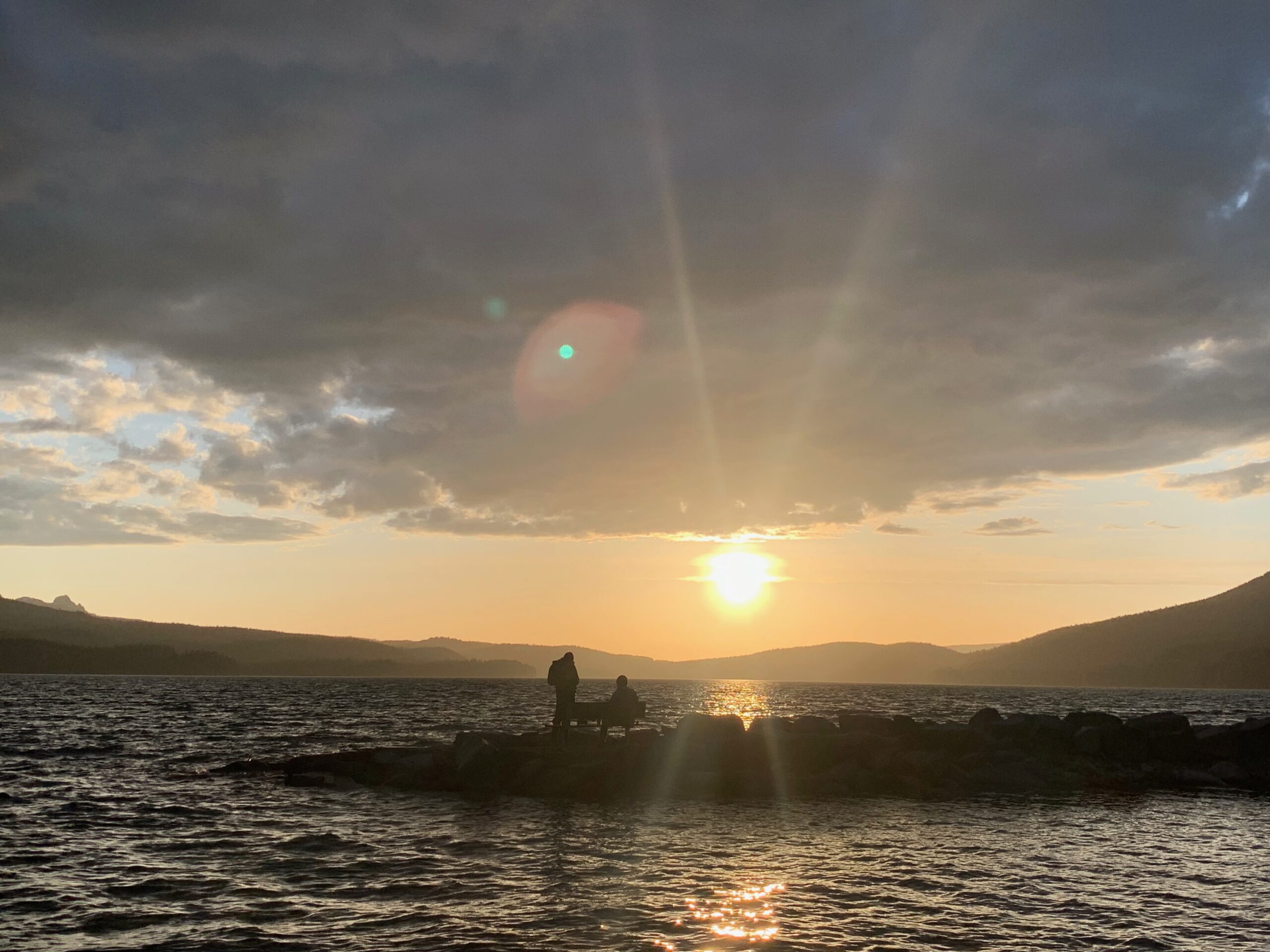
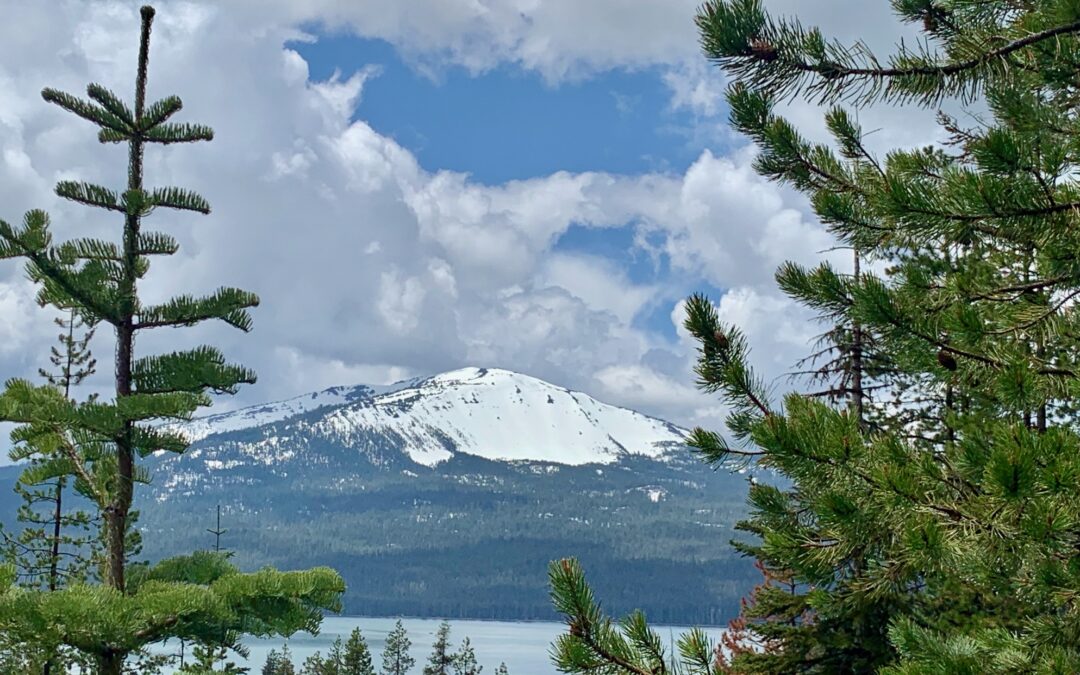
Lovely! Great part of the world, that.
I have to find out more about that wooden pipeline—my late dad was a cooper in the midlands and so too were my ancestors. They would have been amazed at the idea of a gigantic sideways barrel made from redwood planks. Cooperage on a whole new level. Oregon is high on my list of places to experience. Best wishes from Dublin👍
Hi
You’re actually in the Cascades not the Rockies :). The Cascades will see you all the way through Oregon, Washington and into British Columbia! Beautiful pay off the world (we live in Washington).
Enjoying your trip. You’ve wonderful travels ahead!
Thanks; yes, they are beautiful and you are correct — saw me all the way through and am now in Canada… Will be writing on that soon!
Safe travels! Enjoy reading your progress!
Hi Peter, if you get a chance when in Washington state, you should visit Coupeville on Whidbey Island and see the headstone erected there in 1863 to remember a woman from Nenagh who died there in 1861. The man who erected it over his wife’s grave had traveled back to Ireland via ship round-trip around Cape Horn just so he could have the inscription written in cló Gaelach. It was two years after his wife died before he could erect the headstone. See a photo of the headstone and more at https://seattle.curbed.com/maps/irish-heritage-sites-st-patricks-day-seattle. To get to Coupeville from 101, take the ferry from Port Townsend to Coupeville. You’d also enjoy seeing Port Townsend, a wonderful place with many Victorian buildings remaining from the late 19th century.
Lovely story and sorry to be reading it only now, when I am in southern British Colombia. My fault for not checking in to the comments for a few days. If I pass this way on the way back, I’ll try to go there and write about it. Best — Peter
That’s amazing. Turas an fhada chun rud mar sin a fáil.